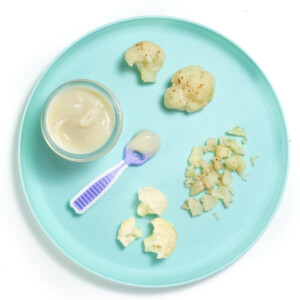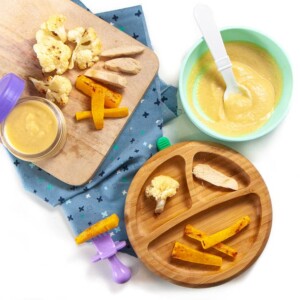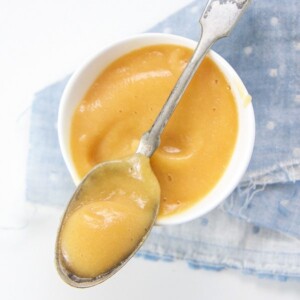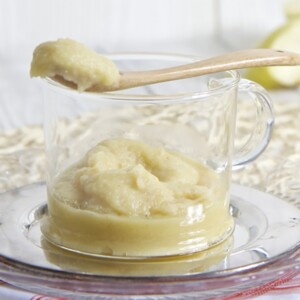Cauliflower Benefits for Baby
Cauliflower is an easy vegetable to get year-round and is great served to your baby, toddler, and kids! This post will go into detail about the health benefits of cauliflower, how to select and store cauliflower, as well as our favorite recipes.
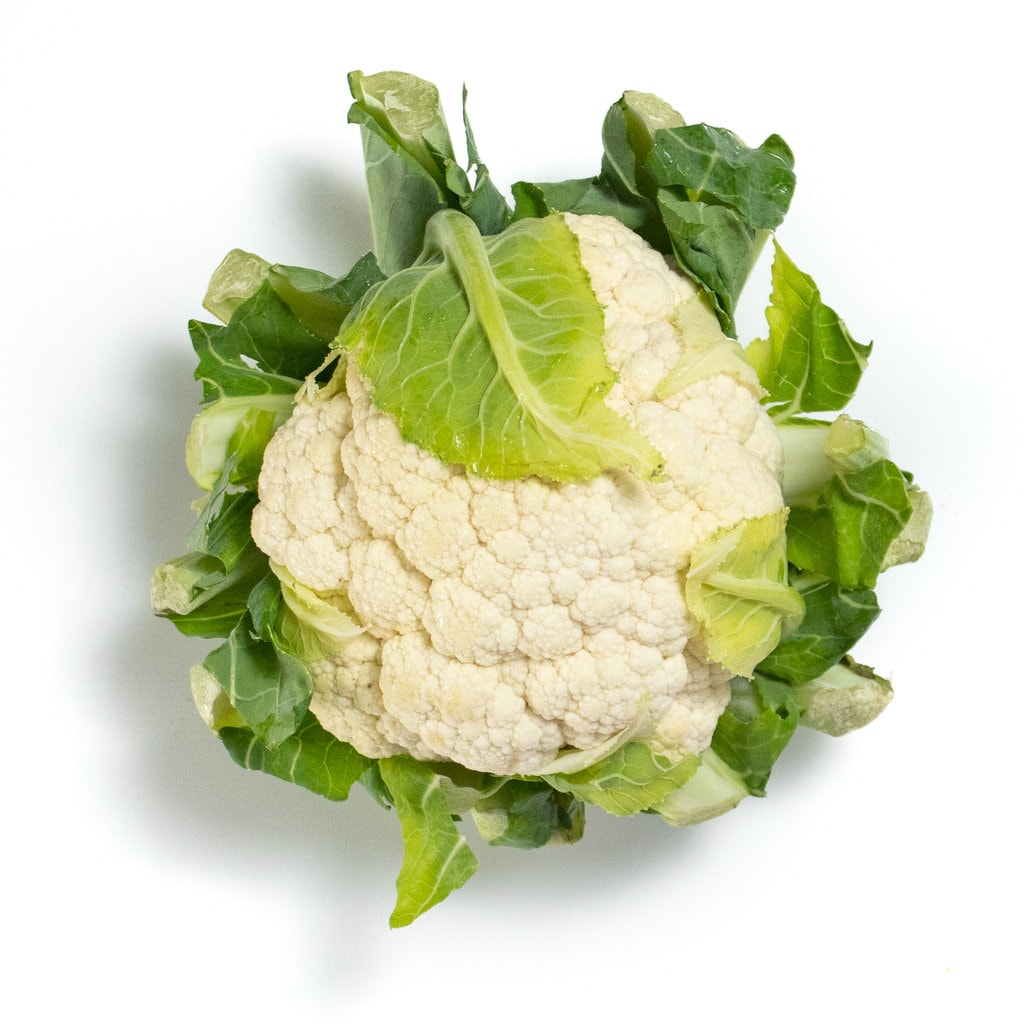
Medically reviewed and co-written by Jamie Johnson, Registered Dietitian Nutritionist (RDN), and Lauren Braaten, Pediatric Occupational Therapist (OT).
Cauliflower for Baby
Cauliflower is one of the most nutrient-dense vegetables out there and is a great food to introduce to your baby or kiddo. Like broccoli and Brussels sprouts, cauliflower is a cruciferous veggie full of immune-boosting vitamin C and helps support healthy liver function and detoxification. Cauliflower is also packed with phytochemicals and antioxidants that have been linked to cancer prevention! The fiber content found in cauliflower is also impressive (9 grams for every 100 calories) and may help to alleviate some digestive discomfort and keep the digestive system working smoothly. With that said, the fiber content can prove to be a little troublesome for immature digestive systems, so watch for gassy symptoms after introducing to your baby or kiddo. If they seem uncomfortable, you may want to wait to re-introduce until they are a bit older.
Benefits of Cauliflower for Baby
Typically, white foods don’t have much to offer in the way of vitamins and minerals, but this is not the case with cauliflower. Much like its cousin broccoli, cauliflower has tons of nutrients.
- It provides tons of vitamin C, which is needed for iron absorption and immune support.
- Contains choline, which is essential for your baby’s brain development.
- A good source of fiber to help keep your baby regular.
- High in antioxidants for cancer prevention.
Highlighted Nutritional Importance of Cauliflower
Vitamins
Vitamin C – a potent antioxidant, vitamin C is crucial for a healthy immune system
Vitamin K – a critical fat-soluble vitamin for baby’s cardiovascular system and is necessary for the blood’s clotting capacity
Folate – an important B vitamin that helps support the brain and neurological system
Vitamin B6 – plays an important role in energy-production within the cell and helps to keep hormones balanced
Minerals
Potassium – an electrolyte mineral that supports healthy cardiovascular and kidney function
Manganese – a potent antioxidant that helps protect each cell from damage
Magnesium – necessary for a healthy skeletal system and very important in regulating energy production inside the cell
Phosphorus – crucial for healthy teeth and bones and is used for the growth and repair of body cells and tissues
How to Select & Store Cauliflower
Select
Here’s how to select a head of cauliflower that’s perfectly ripe and ready to enjoy:
- Color: Look for a creamy white color in cauliflower. Avoid those with a dull yellow color or brown spots. The leaves should look fresh and green.
- Texture: You’ll want the heads to be firm to the touch and tightly closed. Avoid heads that are loose or have crumbly florets.
- Weight: Choose a head of cauliflower that feels heavy for its size.
Store
- Wait to wash your cauliflower until you are ready to use it.
- Store fresh cauliflower in a loosely wrapped or perforated plastic bag in the fridge. Cauliflower needs airflow, so don’t seal or knot the bag. If your cauliflower was plastic wrapped from the grocery store, loosen up the knot.
- A fresh cauliflower head will keep up to 5 days in the fridge.
- Frozen cauliflower can last 10-12 months in the freezer.
How to Cut Cauliflower
Cauliflower is one of the easiest veggies to cut and serve in many different ways. Here are three of our favorite options for cutting cauliflower:
- Florets
- Steaks
- Rice

